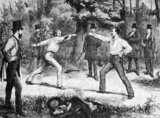
In this lesson, the performances continue. The third group of students will perform their memorized passages from Much Ado About Nothing .
- Subject:
- English Language Arts
- Material Type:
- Lesson Plan
- Date Added:
- 09/21/2015

In this lesson, the performances continue. The third group of students will perform their memorized passages from Much Ado About Nothing .
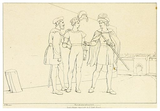
In this lesson, students will take the second in a series of three Cold Write assessments in the narrative genre. The Benchmark Assessment (Cold Write) is an unassisted and unrevised piece of writing whose purpose is to provide a quick gauge of the student’s mastery of the characteristics of a given genre. Today’s Benchmark Assessment (Cold Write) measures and provides a benchmark of students’ mastery of narrative writing. Following this, students will analyze the basic parts of a sonnet and learn how they, too, can create one.

In this lesson, students will gain a fuller understanding of the beauty standards for women in Elizabethan England. This understanding will help them appreciate Sonnets 130 and 18 and how Shakespeare plays with his readers’ expectations.
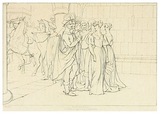
In this lesson, students will see if humor can transcend time and if their general rules for comedy can still apply to Shakespeare. They will also become familiar with some of Shakespeare’s insults and compliments and investigate the humor in them. Finally, they will study iambic pentameter and read a Shakespearean sonnet.

In this lesson, students will look at five passages from a morality handbook called The Good and the Badde . This book was written during the Elizabethan Era, and it tells us a lot about what people considered proper and improper behavior in English society. The sections they read will help them appreciate both Shakespeare’s sonnets andMuch Ado About Nothing .
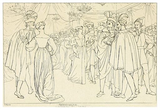
In this lesson, students will be reintroduced to William Shakespeare and his world. To prepare to study his language more closely, they will analyze humor and see if they can identify just what it is that makes something funny.

In this short unit, students will spend three lessons exploring the importance of themes and main ideas in fiction and informational texts. Now would be a good time to have them take an assessment of their reading and writing skills. They'll explore theme through O. Henry's classic short story "The Gift of the Magi" and consider how this piece compares to the main idea in the article "The Proven Power of Giving, Not Getting."

Over the next two lessons, you will complete the culminating assessment for this unit. You'll read text and answer questions that will reflect your reading comprehension.Over the next two lessons, students will complete the culminating assessment for this unit.In this lesson, students will read text and answer questions that reflect their reading comprehension. Some questions will ask students to select from a group of answers supplied. Other questions will ask students to construct their own answers and write them in the space provided.

In this lesson, you will take the writing portion of the culminating assessment. You will continue to use the skills you have learned in the first three lessons of this unit.Today, students will take the writing portion of the culminating assessment.They will reflect on all the material they have read in this unit, and they will use their understanding of all the material presented to them to write an essay. You will evaluate their work in both reading comprehension and writing.Lesson PreparationRead the lesson and student content.Anticipate student difficulties and identify the differentiation options you will choose for working with your students.If you have students on an IEP or other accommodations, check to see whether they receive extended time or need an alternative test setting. Work with the professional supporting SWDs to make sure student needs are met.

In this lesson, students will read a famous short story by the author O. Henry and consider how gift giving affects both the giver and the receiver. They’ll learn about aphorisms and create their own bumper sticker.

In this lesson, students will consider whether aphorisms are trite, true, or both. They’ll think about the theme of “The Gift of the Magi” and read an informational article on a similar subject.

In this lesson, students will consider the difference between a theme and amain idea and create a visual representation comparing your two texts. Finally, they'll talk about why and how you can cite evidence from texts.In this lesson, students will consider the difference between a theme and amain idea and create a visual representation comparing their two texts. Finally, they’ll talk about why and how they can cite evidence from texts.

In this unit, students will produce two major pieces of work. The first piece is an argument essay that grapples with one of the core questions of the unit: who are we, and who have we become because of the ways we connect? Students will read, annotate, and discuss several texts together as they consider the issues surrounding this question, and they will also research and annotate independently as they search for more evidence and perspectives to help deepen their ideas. They will also create a museum exhibit as part of a team. The exhibit project will help students identify what's worth preserving about their unique place in history.
PROJECT UNITS
This project unit continues to meet the English Language Arts standards as it also utilizes the learning principles established by the Partnership for 21st Century Skills. It is designed to support deep content knowledge and perseverance through long-term project planning and implementation. In addition, it will help students to recognize, develop, and apply the planning, teamwork, communication, and presentation skills they will use while presenting a final product to their class and/or the greater community. This real-world project-based activity will give students an opportunity to apply the skills they have been learning all year and will guide them to develop the motivation, knowledge, and skills they need in order to be college and career ready.
ACCOMPLISHMENTS
Students write an argument paper where they develop a claim about current culture as it has been influenced by digital connectivity.
Students participate in a group project to create a museum exhibit that captures a unique place, time, and relationship to technology. Students acknowledge the differing perspectives of each group member and use those perspectives to synthesize one cohesive visual argument together.
GUIDING QUESTIONS
These questions are a guide to stimulate thinking, discussion, and writing on the themes and ideas in the unit. For complete and thoughtful answers and for meaningful discussions, students must use evidence based on careful reading of the texts.
What does it mean to be digitally connected?
What are the implications of living in a world where everyone is digitally connected?
How does the availability of instant connectivity shape our relationships?
What does our Internet use reveal about people's needs as humans?
BENCHMARK ASSESSMENT: Cold Read
During this unit, on a day of your choosing, we recommend you administer a Cold Read to assess students’ reading comprehension. For this assessment, students read a text they have never seen before and then respond to multiple-choice and constructed-response questions. The assessment is not included in this course materials.
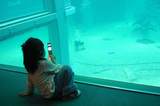
In this lesson, students will look at ways an exhibit is created to appeal to a wide range of audiences. They will consider how they will identify the audience for their exhibit and tailor their work to provide their audience with the best possible experience.
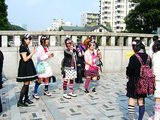
In this lesson, students will use the assessment criteria of the Unit Accomplishments to examine their own museum exhibit and an online exhibit of their choice. They can review the Unit Accomplishments in Lesson 3, Task 1.

In this lesson, students will look at ways an exhibit captures the mindset and perspective of the culture it helps preserve and communicates those essentials to its audience. They'll also have some group time to work on their exhibits.
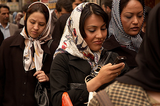
In this lesson, students will look at ways an exhibit identifies what's worth preserving from a culture. They will consider what future generations should know about Digital Native culture.

In this lesson, students will finalize and set up their exhibits. This lesson is their opportunity to bring together all of their research and understanding into a creative format for other people to experience.

During this lesson, students will meet with their museum exhibit team to refine and develop their exhibit's theme. They will decide what stance they want to take on the issue of the Digital Native's relationship to technology.

Today students will explore one another's Digital Native museum exhibits. They'll have a chance to think about each exhibit and make notes about how it accomplishes the scoring criteria.